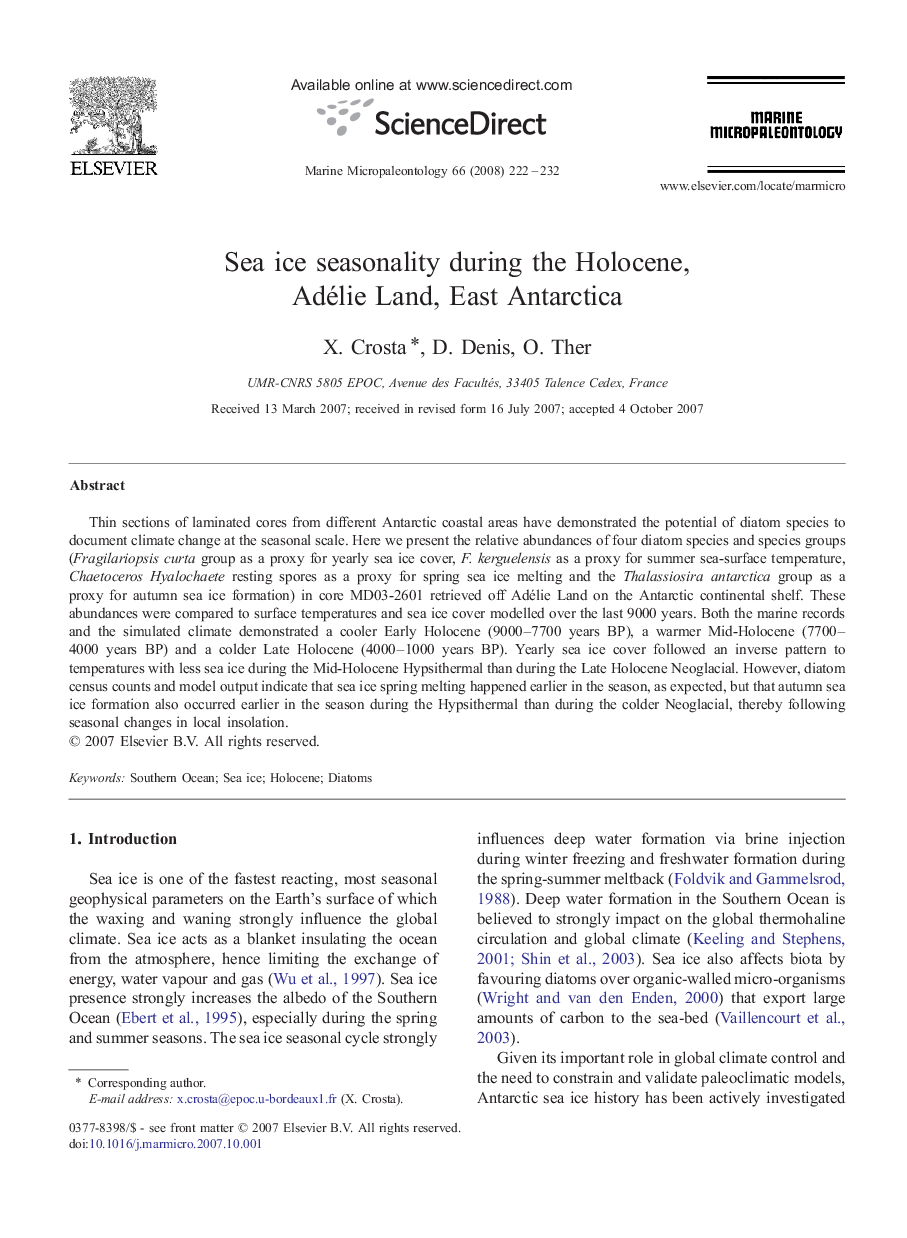| Article ID | Journal | Published Year | Pages | File Type |
|---|---|---|---|---|
| 4749400 | Marine Micropaleontology | 2008 | 11 Pages |
Thin sections of laminated cores from different Antarctic coastal areas have demonstrated the potential of diatom species to document climate change at the seasonal scale. Here we present the relative abundances of four diatom species and species groups (Fragilariopsis curta group as a proxy for yearly sea ice cover, F. kerguelensis as a proxy for summer sea-surface temperature, Chaetoceros Hyalochaete resting spores as a proxy for spring sea ice melting and the Thalassiosira antarctica group as a proxy for autumn sea ice formation) in core MD03-2601 retrieved off Adélie Land on the Antarctic continental shelf. These abundances were compared to surface temperatures and sea ice cover modelled over the last 9000 years. Both the marine records and the simulated climate demonstrated a cooler Early Holocene (9000–7700 years BP), a warmer Mid-Holocene (7700–4000 years BP) and a colder Late Holocene (4000–1000 years BP). Yearly sea ice cover followed an inverse pattern to temperatures with less sea ice during the Mid-Holocene Hypsithermal than during the Late Holocene Neoglacial. However, diatom census counts and model output indicate that sea ice spring melting happened earlier in the season, as expected, but that autumn sea ice formation also occurred earlier in the season during the Hypsithermal than during the colder Neoglacial, thereby following seasonal changes in local insolation.
